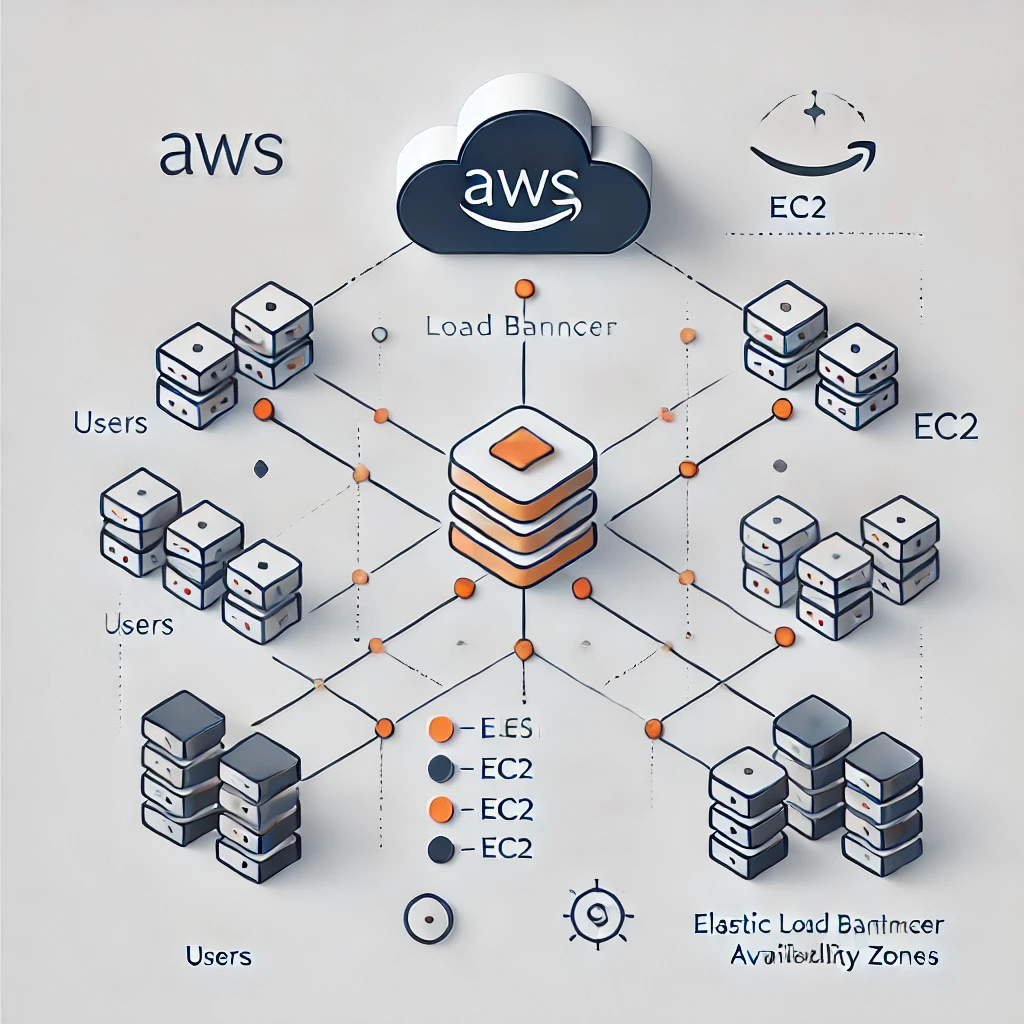Introduction
As cloud applications become more complex and demand higher availability, performance, and scalability, ensuring that network traffic is efficiently distributed among available resources becomes essential. This is where Elastic Load Balancing (ELB), Amazon Web Services’ (AWS) load balancing service, comes into play.
ELB acts as an intelligent entry point for applications, automatically distributing incoming traffic across multiple instances, Availability Zones, and even regions. This not only improves the resilience and scalability of the application but also significantly enhances user experience by reducing latency and preventing overload on specific servers.
In this article, I explore how Elastic Load Balancing works, its different types, the most common use cases, and how it can be integrated into modern architectures based on microservices, containers, and scalable cloud applications.
Types of Load Balancers in Elastic Load Balancing
AWS Elastic Load Balancing (ELB) offers different types of load balancers, each designed to meet specific application, protocol, and performance needs. The choice of which one to use depends on the use case, desired level of control, and the type of traffic being distributed. Below are the main types of load balancers available in ELB:
1. Application Load Balancer (ALB)
The Application Load Balancer operates at Layer 7 of the OSI model (application layer), enabling intelligent routing of HTTP and HTTPS requests. It is ideal for modern applications that use microservices, containers, and APIs. With support for advanced content-based routing rules, traffic can be directed to different target groups based on URLs, headers, HTTP methods, and other parameters.
Key features:
- Content-based routing (URL, host, headers)
- Support for WebSockets and HTTP/2
- Integration with AWS WAF for security
2. Network Load Balancer (NLB)
The Network Load Balancer operates at Layer 4 (transport layer) and is designed to handle large volumes of TCP and UDP traffic with high performance and low latency. It is ideal for applications that require high availability and speed, such as online gaming, streaming, and financial systems.
Key features:
- Low latency and high performance
- Capable of handling millions of simultaneous connections
- Static IPs and Elastic IP address support
3. Gateway Load Balancer (GWLB)
The Gateway Load Balancer focuses on integrating and scaling virtual network appliances such as firewalls, intrusion detection systems (IDS), and intrusion prevention systems (IPS). Operating at Layer 3 (network layer), it simplifies traffic routing through these appliances without complex infrastructure changes.
Key features:
- Simplifies deployment and scaling of virtual appliances
- GENEVE encapsulation support for traffic
- Transparent to network traffic
4. Classic Load Balancer (CLB)
The Classic Load Balancer is AWS’s original load balancing solution, providing basic support for HTTP, HTTPS, TCP, and SSL. While still used in legacy environments, it lacks the advanced features of newer load balancers and is generally not recommended for new projects — ALB or NLB are preferred alternatives.
Key features:
- Supports load balancing at Layers 4 and 7
- Fewer advanced features compared to ALB and NLB
Common Use Cases for Elastic Load Balancing
Elastic Load Balancing plays a fundamental role in many cloud architectures, and its versatility enables it to meet a variety of real-world scenarios. Below are some of the most common use cases where ELB makes a difference:
1. Web Application Scalability
In environments with variable traffic—such as online stores during sales or news portals during peak times—ELB automatically distributes requests across multiple EC2 instances. This ensures that the application remains responsive even under heavy load.
2. Microservices Architectures
As microservices architectures grow, the Application Load Balancer (ALB) enables granular routing of requests to different services, facilitating continuous deployment and independent evolution of application components.
3. High-Performance, Low-Latency Applications
For systems requiring high performance and persistent connections—such as online games, financial trading, and streaming—the Network Load Balancer (NLB) provides the necessary throughput, distributing TCP/UDP traffic with minimal latency.
4. Layered Security Implementations
The Gateway Load Balancer (GWLB) is widely used to scale virtual security appliances such as firewalls and inspection systems, adding an additional layer of protection without compromising application availability.
5. Continuity and Resilience
By distributing traffic across multiple Availability Zones, ELB helps ensure high availability and fault tolerance, minimizing the impact of potential failures in specific instances or regions.
Integrating Elastic Load Balancing with Modern Architectures
In the context of modern architectures—especially those based on microservices, containers, and scalable cloud applications—Elastic Load Balancing (ELB) plays a crucial role in orchestrating traffic and maintaining operational agility.
In microservices environments, where applications are broken into small, independent services, ELB (particularly the Application Load Balancer) enables dynamic routing of requests to the appropriate services. This facilitates continuous updates, automated deployments, and fault isolation—key elements for resilient and rapidly evolving systems.
In container ecosystems such as those managed by Amazon ECS or Kubernetes, ELB integrates seamlessly with service management, distributing traffic across multiple ephemeral instances that can be launched, scaled, or terminated automatically as demand changes. This ensures that the application remains highly available even in dynamic environments.
Moreover, ELB natively supports horizontal scalability, a fundamental aspect for cloud applications that need to adjust resources in real time. By intelligently distributing load, it prevents bottlenecks and enables the infrastructure to respond quickly to traffic spikes or changing usage patterns.
Finally, combining ELB with other AWS services—such as Auto Scaling, CloudWatch, and AWS WAF—creates a robust, secure, and autonomous architecture capable of meeting the challenges of modern applications, with continuous monitoring, threat protection, and automatic capacity adjustment.
Conclusion
Elastic Load Balancing is an essential tool to ensure that cloud applications achieve high availability, performance, and scalability. With its different types of load balancers and native integration with AWS services, it adapts to a variety of modern architectures—from microservices to highly dynamic, container-based environments. By implementing ELB, development and operations teams gain a powerful ally in building resilient systems ready to meet today’s market challenges.

